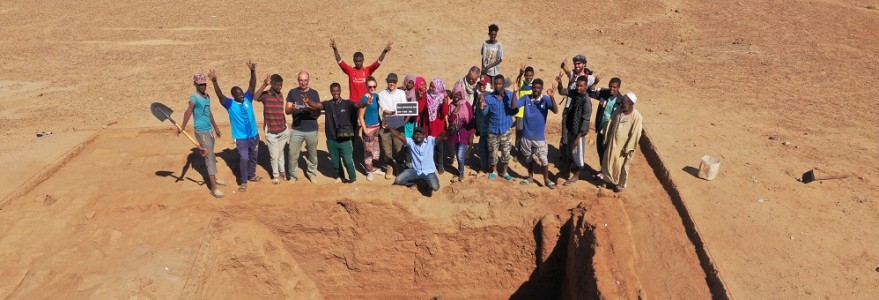The first season of archaeological fieldwork in the medieval city of Soba near Khartoum (Sudan) came to a close. A team of researchers from the Polish Centre of Mediterranean Archaeology, University of Warsaw (PCMA UW) and the Institute of Archaeology and Ethnology of the Polish Academy of the Sciences (IAE PAS) documented hitherto unknown districts of the capital city.
Alwa was one of the three kingdoms of Medieval Nubia. According to an Arab traveller’s account, its capital Soba boasted lavish houses, large monasteries, richly-equipped churches, and beautiful gardens. It was a multi-ethnic metropolis and the seat of royal and ecclesiastical power. Its former glory is now long-gone, and there is not much left on the surface to suggest that it ever existed.
However, geophysical research by a team from the IAE PAS helped to recreate parts of the now-invisible town plan. By mapping magnetic anomalies over an area of 20ha, and using a georadar on further 4ha the team found one densely built-up city district, with a clear network of streets, and another one where the buildings were less densely spaced, but larger. It was not possible to map all parts of the site using geophysics because much of it is covered by modern buildings.
“In the course of excavation in different parts of the site we discovered structures made in several different building materials,” says Dr. Mariusz Drzewiecki of the PCMA UW, the director of the project.
Most buildings were erected in mud brick, some of them plastered and painted red. Baked-brick buildings were much worse preserved because the large medieval bricks have been extensively used as a building material in Khartoum since at least two centuries. The medieval city featured also wooden buildings. “In our trenches, we encountered numerous post holes, some of them still retaining fragments of wooden posts,” explains Dr. Drzewiecki. “Among our finds, the most numerous artefacts were pottery sherds, some richly decorated with painted or incised ornaments. On 38 fragments we found inscriptions in the Greek alphabet. We also documented animal remains, fragments of glass vessels, metal, bone and stone objects. We also collected many organic samples that will be analyzed in the coming months,” he adds.



